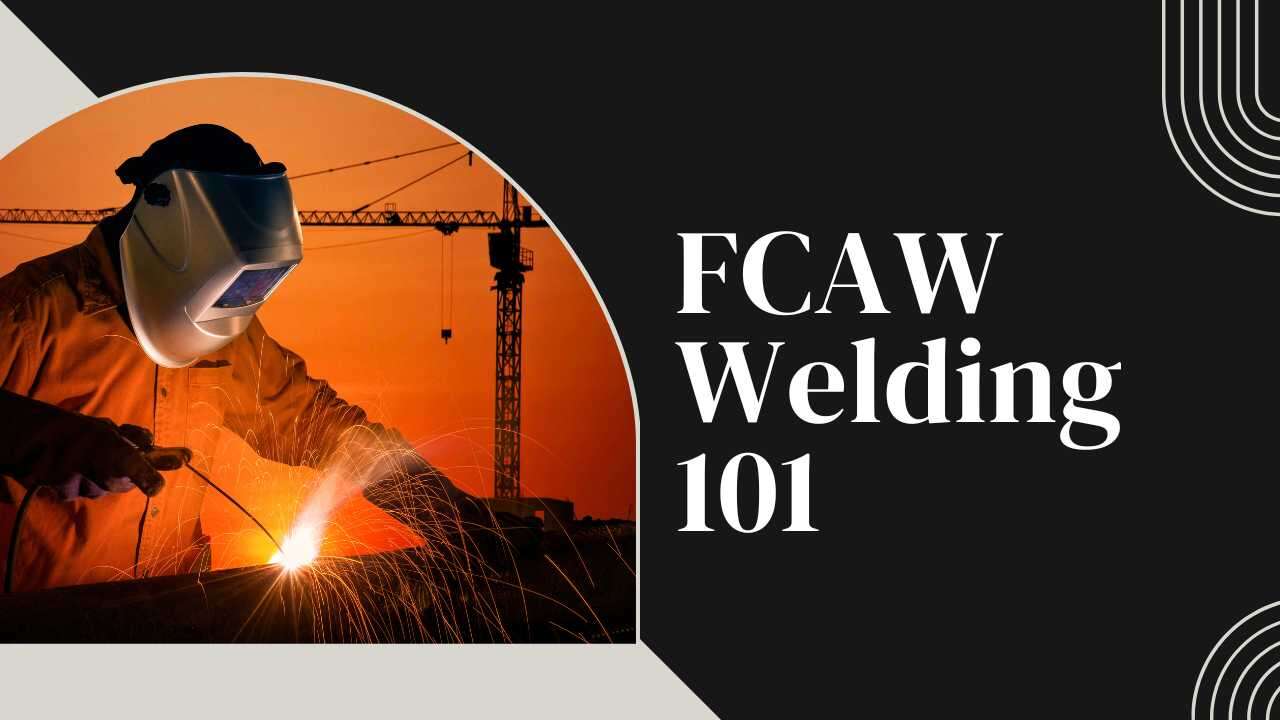Appendix
Introduction
Welding is an essential process in manufacturing, construction, and repair industries. Among the many welding techniques, MIG (Metal Inert Gas) and FCAW (Flux Cored Arc Welding) are two of the most commonly used methods. But how do they differ, and what is the best choice for your project?
In this blog, we will explore the meaning of FCAW welding and compare it to MIG welding, highlighting their key differences and applications. Learn more about FCAW welding at Dew’s Foundry.
What is MIG Welding?
MIG welding, also known as Gas Metal Arc Welding (GMAW), is a process that uses a continuously fed wire electrode and a shielding gas to create strong, clean welds. The shielding gas protects the weld pool from atmospheric contamination, ensuring high-quality results.
Key Features of MIG Welding:
Requires an external gas supply (typically Argon or Argon-CO2 mix).
Ideal for thin to medium-thickness materials.
Produces clean, slag-free welds.
Stat: According to the American Welding Society, MIG welding accounts for over 50% of industrial welding in the United States due to its ease of use and versatility.
Meaning of FCAW Welding
Flux Cored Arc Welding (FCAW) is a semi-automatic or automatic welding process that uses a tubular wire filled with flux. The flux generates a shielding gas during the welding process, eliminating the need for external shielding gas in certain applications.
Key Features of FCAW Welding:
Can be self-shielded (no external gas) or gas-shielded (requires external gas).
Suitable for welding thick materials and outdoor conditions.
High deposition rates make it ideal for heavy-duty projects.
Pro Tip: FCAW is often chosen for structural and industrial applications due to its ability to handle high-stress materials.
Key Differences Between MIG and FCAW Welding
Difference 1: Shielding Gas Requirements
MIG Welding: Requires a constant supply of shielding gas, making it less suitable for outdoor environments where wind can disrupt the gas flow.
FCAW Welding: Self-shielded FCAW does not require external gas, making it more versatile for outdoor and adverse conditions.
Difference 2: Equipment and Setup
MIG Welding: Requires a welding machine, wire feeder, and shielding gas cylinders.
FCAW Welding: Uses a tubular wire electrode, which simplifies the setup, especially in self-shielded applications.
Difference 3: Applications
MIG Welding: Best for thin to medium-thickness materials, such as automotive repair and light manufacturing.
FCAW Welding: Ideal for heavy-duty projects like shipbuilding, structural steel, and pipeline welding.
Difference 4: Environmental Suitability
MIG Welding: Limited to controlled indoor environments due to its reliance on shielding gas.
FCAW Welding: Performs well in outdoor settings and can withstand wind and humidity.
Comparison Table: MIG vs. FCAW Welding
| Feature | MIG Welding | FCAW Welding |
|---|---|---|
| Shielding Gas | Required | Optional (self-shielded FCAW) |
| Best for | Indoor, thin materials | Outdoor, thick materials |
| Equipment Cost | Moderate to High | Moderate |
| Welding Speed | Moderate | High |
| Environmental Tolerance | Low | High |
Advantages and Disadvantages of MIG and FCAW Welding
Advantages of MIG Welding:
Produces clean welds with minimal post-weld cleaning required.
Easy to learn and operate, making it suitable for beginners.
Versatile for various metals, including aluminum and stainless steel.
Advantages of FCAW Welding:
Handles thicker materials with ease.
Performs well in outdoor and windy conditions.
High deposition rates increase productivity.
Disadvantages of MIG Welding:
Not suitable for outdoor environments due to gas shielding requirements.
Higher equipment costs compared to FCAW.
Disadvantages of FCAW Welding:
Produces more fumes and smoke compared to MIG welding.
Requires more skill to control weld quality.
External Insight: Studies by the Welding Institute show that FCAW welding is 25% faster in heavy fabrication compared to MIG welding.
Conclusion
Both MIG and FCAW welding have their strengths, making them suitable for different applications. While MIG welding is ideal for clean, precise indoor work, FCAW welding excels in outdoor, heavy-duty scenarios. Understanding their differences can help you choose the right method for your project.
For expert FCAW welding services, contact Dew’s Foundry to ensure exceptional quality and performance in your welding needs.



